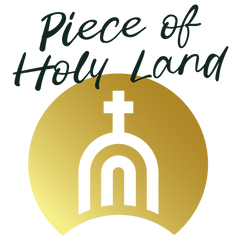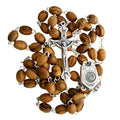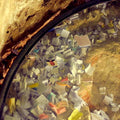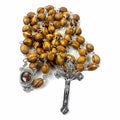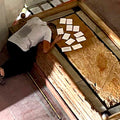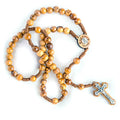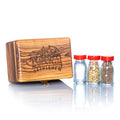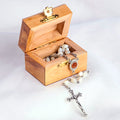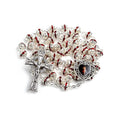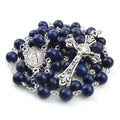Mount of Beatitudes, Tabgha & Bethsaida | Sacred Sites of Jesus
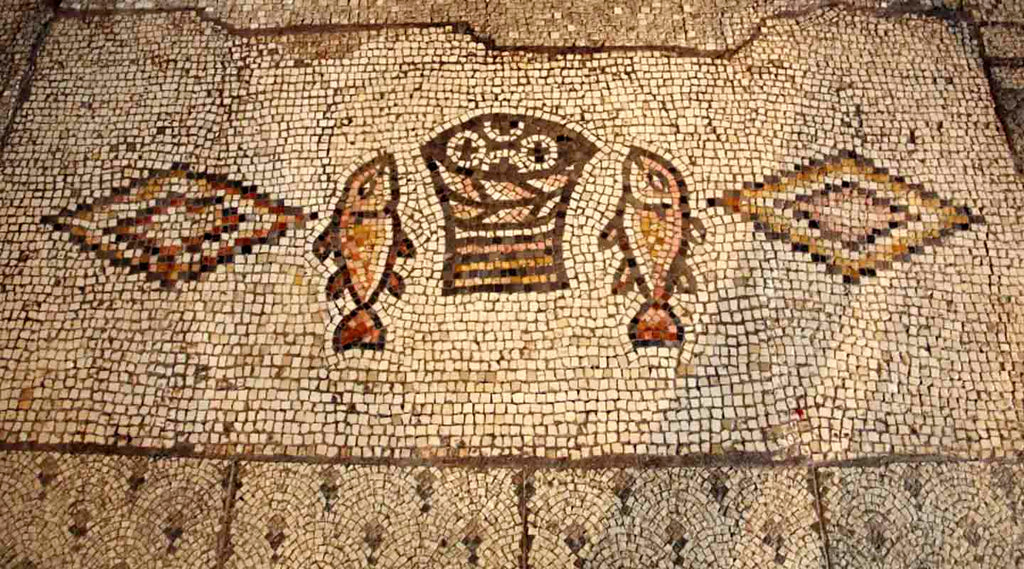
The Sermon on the Mount, the Miracle of the Loaves, and the Village of Apostles
The Mount of Beatitudes – Hill of the Beatitudes and Sermon
Geography and location
Perched on the Korazim Plateau north of the Sea of Galilee, the Mount of Beatitudes is more of a gentle hill than a mountain. It sits between Capernaum and the archaeological site of Tel Kinrot, not far from the ancient village of Ginosar. The summit lies around twenty‑five metres below sea level yet nearly two hundred metres above the lake, making it one of the world’s lowest high points. Its gentle slope overlooks the sparkling waters of the Sea of Galilee, offering natural acoustics that would have allowed great crowds to hear a teacher’s voice. Early pilgrims called it Mount Eremos (“solitary mountain”), and some locals still call the area by that name.

The Sermon on the Mount
According to the Gospel of Matthew, Jesus withdrew to this hill and delivered His most famous discourse. He began with the Beatitudes, nine blessings that invert conventional values by pronouncing the poor in spirit, the meek, the merciful and the peacemakers as truly blessed. He then urged His followers to be salt and light, to love their enemies, and to give secret alms. The Sermon on the Mount also contains the Lord’s Prayer, the Golden Rule, and warnings against hypocrisy. In Jewish context, this teaching echoes Moses receiving the Law on another mountain, but Jesus internalises the commandments and draws the heart towards mercy and authenticity.
"Now when he saw the crowds, he went up on a mountainside and sat down. His disciples came to him, and he began to teach them, saying: Blessed are the poor in spirit." (Matthew 5:1-3)
When read aloud on the Mount of Beatitudes, these teachings resonate with the natural world. The wildflowers, birds and fishermen on the lake illustrate the parables about worry and providence. Pilgrims sitting on the grass imagine themselves among the crowds listening to the voice of Jesus as He re‑ordered their understanding of righteousness. Today’s readers often find that the Beatitudes speak especially to those longing for justice and peace; the call to hunger and thirst for righteousness remains a summons for every generation.
The Sermon on the Mount

Churches and tradition
Christians have commemorated the Mount of Beatitudes for more than sixteen centuries. A small Byzantine church stood here in the 4th century and served local monks until the 7th. Its foundations and a cistern can still be seen below the modern church. The current octagonal chapel was built in the late 1930s by the Franciscan Sisters following plans by Italian architect Antonio Barluzzi. The eight sides represent the eight Beatitudes, and the colourful interior mosaics depict virtues such as faith, temperance and prudence. Surrounding gardens provide quiet spaces for meditation, and the chapel’s shaded arcades frame panoramic views of the lake.
Several popes have visited this site; in March 2000 Pope John Paul II celebrated Mass for a crowd of more than 100,000 here. The hill is also a key stop along the Jesus Trail, a 65‑kilometre pilgrimage route linking Nazareth, the Sea of Galilee and other sites of Jesus’ ministry. The trail allows hikers to descend from the Mount of Beatitudes to nearby Tabgha or Capernaum in the footsteps of the disciples.
Meaning for modern believers
The Beatitudes remain a charter for Christian life. They invite humility, mercy, and a pure heart. From this hillside Jesus calls His followers to be peacemakers and to rejoice in persecution because the Kingdom of Heaven belongs to those who suffer for righteousness. The Mount of Beatitudes therefore reminds pilgrims that Christian discipleship is lived in attitudes rather than rituals. While many come to enjoy the view, those who linger in prayer find the place itself becomes a living sermon on trust, simplicity and compassion.
Tabgha – Place of the Loaves and Fishes
Name and setting
Just down the slope from the Mount of Beatitudes lies Tabgha, an area fed by a cluster of natural springs. Its ancient name Heptapegon means “seven springs.” The Arabic name al‑Tabigha and the Hebrew Ein Sheva (“spring of seven”) preserve this memory. The springs create lush vegetation along the shoreline, drawing wildlife and humans alike. Tabgha sits at the edge of the Sea of Galilee; from its shoreline the path continues around the lake towards Magdala and Tiberias.
Church of the Multiplication, Tabgha

The miracle of the loaves and fishes
The Gospel of Mark recounts how Jesus and His disciples withdrew to “a lonely place” after the death of John the Baptist. Crowds followed, and Jesus had compassion on them. With five barley loaves and two small fish offered by a boy, He gave thanks, broke the bread and fish, and fed five thousand men plus women and children. Leftovers filled twelve baskets. This miracle at Tabgha reveals God’s generous abundance and prefigures the Eucharist. For pilgrims, the story comes alive when they stand before the stone inside the Church of the Multiplication, a basalt rock that tradition holds is the very table on which Jesus placed the bread and fish.
The miracle of the loaves and fishes

Resurrection appearance
Tabgha is also linked to Jesus’ resurrection. The Gospel of John records that after Easter morning, several disciples returned to fishing. At dawn Jesus stood on the shore – though they did not recognise Him, and told them to cast their net on the right side. The resulting catch of 153 large fish made them realise it was the Lord. After breakfast, Jesus asked Simon Peter three times, “Do you love me?” and entrusted him with shepherding His flock. This narrative is remembered at the Church of the Primacy of St Peter, a small Franciscan chapel built right on the water’s edge where dark basalt steps lead down to the lake. The events of John 21 invite believers to renew their love for Christ and to accept His call to feed His sheep.
Church of the Primacy of St Peter

History and churches
Evidence suggests that Christian worship at Tabgha began early. In the 4th century a Jewish convert named Joseph of Tiberias received permission from Emperor Constantine to build churches in Galilee. He erected a small shrine over the rock of the multiplication. Around 480 the Patriarch Martyrius of Jerusalem replaced this shrine with a larger basilica, whose floor he decorated with a stunning Nile mosaic of birds, plants and water towers. The mosaic includes a panel near the altar showing two fish flanking a basket of four loaves, a powerful symbol of the miracle. Though the basilica was destroyed in the 7th century, the mosaic survived buried under centuries of debris. In the 20th century German Benedictine monks rebuilt the Church of the Multiplication, carefully incorporating the mosaic in the sanctuary and preserving the rock.
Just a short walk away stands the Church of the Primacy of St Peter, rebuilt in 1933 on foundations dating to the 4th century. Its dark basalt walls contrast with the light limestone of the nearby Church of the Multiplication. Inside, a simple altar of stone invites pilgrims to ponder the conversation between Jesus and Peter. Outside, pilgrims gather on the shoreline, often wading into the water at the spot called Mensa Christi (“Table of Christ”). These two churches make Tabgha one of the most evocative pilgrimage sites in Galilee.
Spiritual lessons and modern pilgrimage
The story of the loaves and fishes teaches that God can multiply our small offerings into abundance. Tabgha therefore encourages generosity and trust. The resurrection appearance reminds believers that Jesus meets them in ordinary work and invites them to renew their commitment to love and service. Today, pilgrims walk from the Mount of Beatitudes down to Tabgha along a shaded path, pausing to pray at each church. Visitors can buy bread and fish from local vendors or share a meal at the lakeside, symbolically entering into the meal that Jesus blessed. Even those who cannot travel can connect spiritually to the site by blessing their homes with Jordan River Holy Water, a gift drawn from the same river that feeds the Sea of Galilee and flows past Bethsaida before emptying into the Dead Sea. This sacred water is available through our online collection and is a meaningful way to remember the generosity of God in the miracle of Tabgha.
Bethsaida – Village of the Apostles
Name and location
Bethsaida’s name comes from the Aramaic words for “house of the fisherman” or “house of the hunter.” Situated on the northern shore of the Sea of Galilee near where the Jordan River enters the lake, the town was once a bustling fishing village. Ancient writers such as Pliny the Elder and Josephus place it east of the lake, not far from Capernaum. The precise location, however, has puzzled archaeologists. Two sites; Et‑Tell inland and El‑Araj on the shoreline, contend for the honour of being biblical Bethsaida. Excavations at Et‑Tell reveal an Iron Age city gate and fortifications belonging to the kingdom of Geshur, while El‑Araj has produced a Roman bathhouse and a Byzantine church, suggesting a city later renamed Julias by Philip the Tetrarch around 30 CE. Either site could be the fishing village where Jesus walked and taught.
Shrine with standing stones at Iron-Age city gate, et-Tell

Biblical significance
The Gospels identify Bethsaida as the hometown of the apostles Peter, Andrew and Philip. Jesus performed several miracles there: He restored sight to a blind man by spitting on his eyes and placing His hands on him, and after a two‑stage healing the man saw clearly (Mark 8:22‑26). In Tabgha near Bethsaida, Jesus fed five thousand people with five loaves and two fish (Luke 9:10‑17). Despite such wonders, many inhabitants did not repent. Consequently Jesus pronounced a woe on the city, saying that if Tyre and Sidon had witnessed such miracles they would have repented long ago. This warning emphasises that miracles call for a response of faith, not just amazement. The “woe to Bethsaida” is remembered alongside similar laments over Chorazin and Capernaum.
History beyond the Gospels
Philip the Tetrarch elevated Bethsaida to city status, renaming it Julias in honour of Livia Julia, wife of Emperor Augustus. He fortified the town, built public buildings, and reportedly died there. In the Byzantine period a church was constructed, perhaps to honour the apostles. After the Muslim conquest in the 7th century, Bethsaida declined and was eventually abandoned. By the Crusader era, pilgrims no longer mentioned it, and its location slipped from memory. The “curse” of Bethsaida seems to have come true. Today archaeologists excavate both Et‑Tell and El‑Araj, unearthing fishing hooks, weights and other artefacts that help reconstruct daily life in the time of Jesus.
Message for disciples
Bethsaida stands as both an inspiration and a warning. Its fishermen responded eagerly to Jesus’ call, leaving their nets to follow Him. Yet the wider community remained indifferent even after witnessing miracles. The message is clear: faith requires not only seeing but turning towards God. Modern Christians can take encouragement from the apostles’ example of prompt obedience and examine their hearts in light of Jesus’ lament over unrepentant cities. Keeping a small olive wood cross from the Holy Land near your prayer corner can serve as a tangible reminder of the apostles’ vocation and the call to follow Christ wholeheartedly.
Legacy and Pilgrimage Today
Pilgrimage routes and experiences
The Mount of Beatitudes, Tabgha and Bethsaida are easily reached along the northern shore of the Sea of Galilee. Many pilgrims begin at the Mount of Beatitudes, descending to Tabgha via the Cove of the Sower, a natural amphitheatre on the lakeshore where Jesus taught large crowds. Others continue westwards towards Capernaum, exploring the ruins of the synagogue and Peter’s house, or eastwards toward Bethsaida along the banks of the Jordan River. The Jesus Trail links these sites into a multi‑day hike through rolling hills, olive groves and vineyards. Along the way, pilgrims pause to read the Sermon on the Mount, to share bread and fish by the water, and to pray for healing at the site of the blind man’s miracle. Each step becomes a meditation on faith, abundance and discipleship.
Interfaith and historical significance
Although these sites are rooted in Christian memory, they also intersect with Jewish and later Islamic history. The Sermon on the Mount echoes the giving of the Torah at Sinai; the miracle of the loaves resonates with God’s provision of manna in the wilderness. Bethsaida’s upgrade to a Greek polis under Philip the Tetrarch reflects the blending of Jewish and Hellenistic cultures. Later, Tabgha’s seven springs and Bethsaida’s location at the mouth of the Jordan attracted Muslim and Ottoman settlers who built mills and villages here. Understanding this layered history enriches pilgrimage by situating Gospel events within the broader tapestry of the Holy Land.
Bringing the Galilee home
Not everyone can travel to the Holy Land, but the spiritual riches of these places are accessible through prayer, study and sacred objects. Water from the Jordan River, available as holy water in our online store, offers a tangible connection to Jesus’ baptism and the life‑giving springs that feed the Sea of Galilee. An Olive Wood Cross carved in Bethlehem carries the texture and fragrance of the land where Jesus ministered. A Comfort Cross fits perfectly in the palm and evokes the Hebrew name Nahum (“comfort”), which lies behind “Capernaum” and also resonates with the compassionate miracles performed at Bethsaida. When integrated into daily devotions, these items turn homes into miniature pilgrimage sites and allow believers to pray in solidarity with the land and its people.
Frequently Asked Questions about the Mount of Beatitudes, Tabgha & Bethsaida
Q: Where exactly is the Mount of Beatitudes located?
The Mount of Beatitudes is on the north‑western shore of the Sea of Galilee, between ancient Capernaum and the archaeological site of Tel Kinrot. It rises gently on the Korazim Plateau and sits about 25 metres below sea level yet above the lake’s surface. From its summit you can see the lake and much of the Galilee, making it ideal for gatherings and teaching. The hillside is reached via a small road from highway 87, and it is part of many pilgrimage routes in northern Israel.
Q: What are the Beatitudes, and why are they important?
The Beatitudes are the opening verses of Jesus’ Sermon on the Mount in Matthew 5. Each statement begins with “Blessed are…” and highlights values such as spiritual poverty, meekness, mercy, purity of heart, peacemaking and perseverance in righteousness. These teachings invert worldly expectations by elevating humility and compassion over wealth and power. They form a blueprint for Christian discipleship and continue to inspire believers who seek to embody the Kingdom of God in everyday life.
Q: What happened at Tabgha besides the multiplication of loaves and fishes?
In addition to the feeding miracle, Tabgha is linked to the post‑resurrection appearance of Jesus recorded in John 21. After a fruitless night of fishing, the disciples encountered the risen Christ on the shore, obeyed His instructions, and hauled in a miraculous catch. Jesus then ate with them and commissioned Peter to shepherd His flock. The Church of the Primacy of St. Peter marks this event and invites pilgrims to renew their love and commitment to Christ. Nearby springs and mosaics also testify to early Christian worship in this location.
Q: Who were the apostles from Bethsaida?
The Gospels identify Bethsaida as the hometown of Peter, Andrew and Philip. These fishermen left their nets to follow Jesus and became key figures among the Twelve. Tradition holds that their family homes were along the shore where the Jordan River enters the Sea of Galilee. Knowing their humble origins helps modern disciples appreciate the radical nature of their call and encourages them to respond generously when God invites them to new paths.
Q: Why did Jesus pronounce a woe on Bethsaida?
Despite witnessing healings and miracles, many residents of Bethsaida did not repent or recognise Jesus. In Matthew 11 and Luke 10 He lamented their hardness of heart, declaring that Gentile cities like Tyre and Sidon would have repented if they had seen such wonders. This rebuke serves as a warning against complacency and reminds believers that signs and wonders are meant to lead to deeper faith and transformation, not to mere curiosity.
Q: Are there still churches at these sites today?
Yes. The Mount of Beatitudes is crowned by a Franciscan chapel with an octagonal design symbolising the Beatitudes. At Tabgha you can visit the Church of the Multiplication with its 5th‑century mosaic of bread and fish and the Church of the Primacy of St. Peter beside the lake. Bethsaida does not currently have an active church, but archaeologists have uncovered remains of a Byzantine basilica at El‑Araj. Pilgrims often travel between these churches on the same day, reflecting on each aspect of Jesus’ ministry.
Q: How can I connect with these sites without travelling?
For those unable to visit in person, sacred items from the Holy Land provide a meaningful link. Jordan River Holy Water offers a physical reminder of baptism and the living water themes in the Gospels. An Olive Wood Cross or Comfort Cross connects you to the craft of local artisans and the wood of ancient olive trees. Reading the Sermon on the Mount aloud at home, meditating on the loaves and fishes miracle, or praying for spiritual sight using the story of the blind man from Bethsaida are other ways to bring the Galilee into daily devotion.
Q: What other nearby sites should pilgrims visit?
Pilgrims on the northern shore of the Sea of Galilee often include Capernaum, the town of Jesus, with its ancient synagogue and the house of Peter. Many also climb nearby Mount Arbel for sweeping views of the lake or visit Magdala, the hometown of Mary Magdalene. Exploring the lake itself by boat allows travellers to imagine Jesus calming the storm and walking on water. Each site adds another layer to the story of Jesus’ ministry and deepens appreciation for the biblical landscape.
SHARE:

